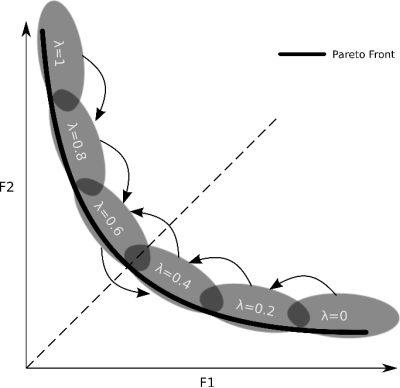Our fans and followers must be happy! ;D
They can now access the excellent work by Federico Liberatore in IEEE ToCIAIG journal.
This is the best journal concerning Artificial Intelligence in games, with a very strict reviewing process, so, we are very proud of this success. ;)
This is the next step in the research started one year and a half ago designing competitive Ghost Teams for catching Ms. PacMan.
The abstract is:
In the last year, thanks to the Ms. Pac-Man vs Ghosts competition, the game of Ms. Pac-Man has gained increasing attention from academics in the field of Computational Intelligence. In this work, we contribute to this research stream by presenting a simple Genetic Algorithm with Lexicographic Ranking (GALR) for the optimization of Flocking Strategy-based ghost controllers. Flocking Strategies are a paradigm for intelligent agents characterized by showing emergent behavior and for having very little computational and memory requirements, making them well suited for commercial applications and mobile devices. In particular, we study empirically the effect of optimizing homogeneous and heterogeneous teams. The computational analysis shows that the Flocking Strategy-based controllers generated by the proposed GALR outperform the ghost controllers included in the competition framework and some of those presented in the literature.
The paper can be found here: http://ieeexplore.ieee.org/xpls/abs_all.jsp?arnumber=7093170&tag=1
Enjoy it!
(And cite us) :D
